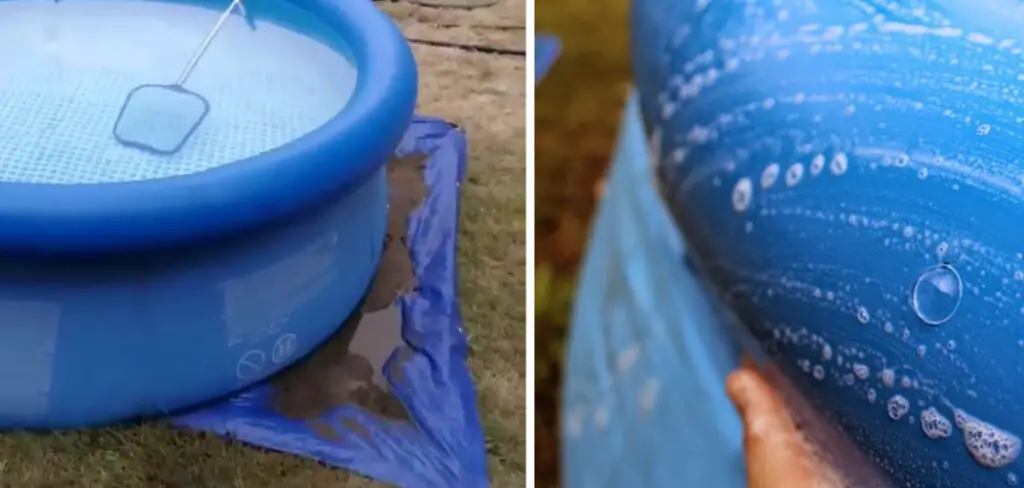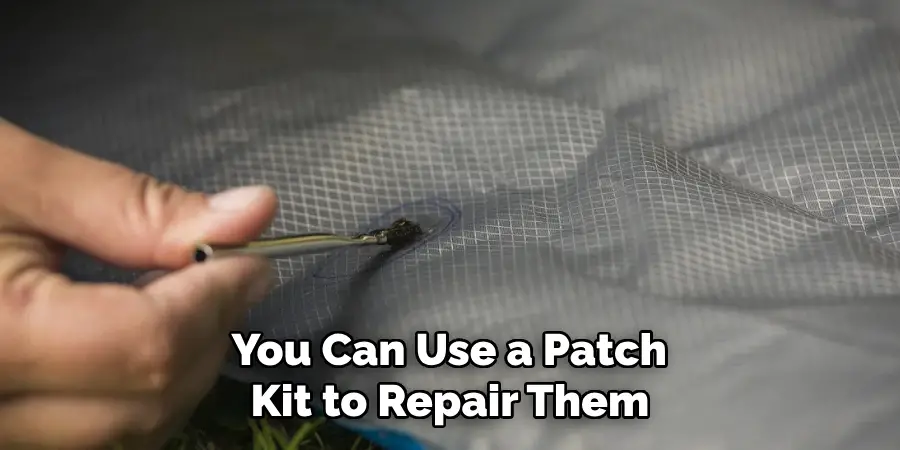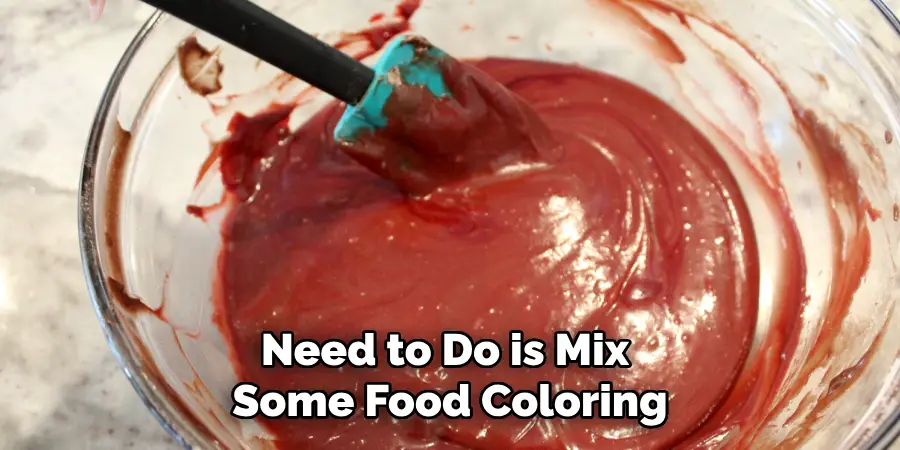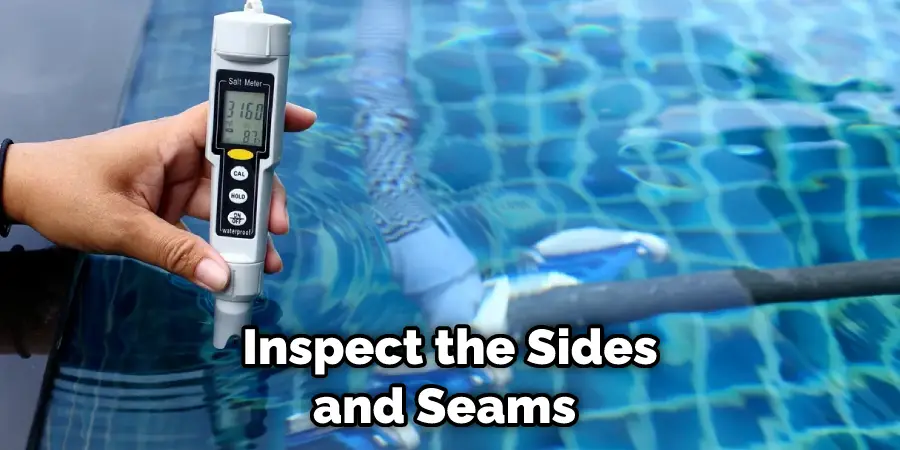Discovering a leak in your inflatable pool can be a frustrating experience, but it’s a common issue that can be resolved with the right approach. Whether you use your inflatable pool for cooling off on a hot day or as a fun addition to your backyard, a leak can quickly put a damper on your aquatic enjoyment.

However, with the right guidance and techniques, you can pinpoint the source of the leak and take steps to repair it, ensuring your pool remains watertight and ready for many more enjoyable dips.
In this article, we’ll walk you through how to find a leak in an inflatable pool, from conducting a visual inspection to using water and soapy solutions to detect even the smallest of leaks. So, let’s dive into the world of leak detection and restoration, helping you extend the life and utility of your inflatable pool.
The Importance of Finding and Fixing Leaks in an Inflatable Pool
When it comes to owning an inflatable pool, the last thing you want to deal with is a leak. Not only can a leak cause your pool to lose air and become unusable, but it can also be a safety hazard for anyone using the pool. Finding and fixing leaks in your inflatable pool is crucial for ensuring its longevity and safety.
There are several reasons why leaks can occur in an inflatable pool. The most common causes include wear and tear, punctures, and even improper storage. No matter the cause, it’s essential to take prompt action when a leak is detected.
The first step in finding a leak is to identify where it may be coming from. This can be done by visually inspecting the pool for any holes or tears, as well as feeling for any areas that may be losing air. Another method is to fill the pool with water and look for any signs of leakage.
Once a leak has been located, it’s important to fix it as soon as possible. Leaving a leak unattended can not only worsen the problem but also lead to further damage to your pool. There are several options for fixing a leak, including using a patch kit specifically designed for inflatable pools, using waterproof tape, or even using a bike tire repair kit.
Aside from preventing your pool from becoming unusable and potentially causing harm to anyone using it, finding and fixing leaks also helps save money in the long run. By addressing the issue promptly, you can avoid having to constantly refill your pool with air or purchase a new one altogether.
10 Methods How to Find a Leak in an Inflatable Pool
1. Visual Inspection
The first step in finding a leak in an inflatable pool is to do a visual inspection. Look for any signs of damage, such as tears or punctures in the material. If you find any, you can use a patch kit to repair them. You should also look for any areas that may be sagging or have air bubbles forming around them, which could indicate a slow leak.

2. Soap and Water Test
Another method you can use to find a leak is the soap and water test. Simply fill up your pool with warm water and add some dish soap to it. Then, use your hands to rub the soapy mixture over the entire surface of the pool until it’s completely covered. If there is a leak, you should see bubbles forming at the spot where the air is escaping from the pool.
3. Listen for Air Leaks
You can also try listening for air leaks by placing your ear close to the surface of the pool and listening carefully for any hissing sounds that may indicate an air leak. This method works best when there are no other noises around that could mask the sound of an air leak.
4. Pressure Test
If you’re still having trouble finding a leak, you can try using a pressure test to detect it. To do this, fill up your pool with water until it’s about two-thirds full, and then place one end of a garden hose into it and plug the other end with your finger or thumb to create pressure inside the pool. If there is an air leak somewhere, you should hear it coming out from under your thumb or finger as soon as you begin applying pressure inside the pool.
5. Submerge Pool
Another way to find a leak in an inflatable pool is by submerging it in water and looking for any bubbles that are coming out from underneath its surface. This method works best if you have access to a large body of water such as a lake, river, or pond since it will make it easier to spot any escaping air bubbles quickly before they dissipate into nothingness on their own accord!
6. Use Dye
You can also try using dye in order to find leaks in an inflatable pool more easily than with just plain soap and water alone. All you need to do is mix some food coloring into some lukewarm water and then pour this mixture into your inflatable pool while looking closely at its surface for any signs of dye leaking out from underneath! If there are any leaks present, they will be easy enough for even amateur eyesight to spot thanks to this colorful concoction!

7. Check Valves
If all else fails, check each valve on your inflatable pool individually by blowing into them one at a time while watching carefully for any signs of escaping air bubbles on their surfaces! This method works best when done slowly so that even small amounts of escaping air can be spotted easily enough before they disappear without notice!
8. Use UV Light
Inflatable pools often contain tiny pinholes that are difficult (if not impossible) to detect with just our eyes alone – but thankfully, these pinholes become much more visible when exposed to ultraviolet light! Just turn off all other lights in your home before turning on an ultraviolet lamp near your inflatable pool – if there are any pinhole leaks present, then they will become immediately apparent under its bright glow!
9. Apply Vacuum Pressure
One last trick that may help locate stubborn leaks involves applying vacuum pressure directly onto areas where leaks may be suspected – simply use something like a vacuum cleaner hose attachment placed over these spots while watching closely for any changes in their appearance which might indicate that an escape route has been found!
10. Check Seams & Joints
Finally, don’t forget about checking seams & joints between different sections of material used within your inflatable pool construction – sometimes these areas can be overlooked during visual inspections but they too can act as potential escape routes if not properly sealed off properly during manufacturing processes!
Things to Consider When Finding a Leak in an Inflatable Pool
When enjoying the warm weather, having an inflatable pool can be a great way to cool off and have fun. However, if you notice that your pool is constantly deflating or becoming less firm over time, it may have a leak. This can be frustrating for many reasons, especially if you have spent money on your pool and don’t want to constantly have to refill it.

If you are unsure of how to find a leak in your inflatable pool, there are a few things that you should consider before starting the process. These considerations can help make finding and fixing the leak much easier and more successful.
Location of the Pool
The location of your pool can play a major factor in the likelihood of having a leak. If your pool is placed on rough or uneven ground, it is more susceptible to punctures and tears. Similarly, if the pool is near sharp objects such as rocks or branches, there is a higher chance of damaging the material.
Type of Material
Inflatable pools can be made from different materials such as vinyl, PVC, or plastic. Understanding the type of material your pool is made from can help you determine the best way to find and fix a leak. For example, if your pool is made from vinyl, using rubbing alcohol may cause damage to the material.
Weather Conditions
Weather conditions such as extreme heat or cold can impact the integrity of your pool’s material. High temperatures can cause the material to expand, while cooler temperatures can cause it to contract. Both of these changes can result in leaks or tears in the material, so it is important to take note of the weather conditions when trying to find a leak.
Age and Condition of Pool
The age and condition of your inflatable pool can also affect its susceptibility to leaks. As pools get older, the material may become weaker and more prone to tears or punctures. It is important to regularly inspect your pool for signs of wear and tear, and consider replacing it if it is becoming too worn.

Conclusion
Summer is right around the corner and now is the time to start preparing for your outdoor fun. Whether it’s an inflatable pool, a small water slide, or a bouncy castle, there are steps you can take to ensure that it remains in pristine condition. We have discussed how to find a leak in an inflatable pool and how to plug it up once you discover one.
It may require less effort than you think if you are equipped with the right tools and knowledge. Being well informed will help keep your pool inflated fully and ready for summertime revelry. Utilizing our tips before you dive into your pool of fun will ensure that your backyard is always ready for swimming when the time comes. So get out there with your repair kit and make sure your pool is up and running!
About
Outdoor Fixes is a distinguished figure in the world of Diy design, with a decade of expertise creating innovative and sustainable Diy solutions.
His professional focus lies in merging traditional craftsmanship with modern manufacturing techniques,
fostering designs that are both practical and environmentally conscious. As the author of diy,
outdoorfixes delves into the art and science of outdoorfixes-making, inspiring artisans and industry professionals alike.
Education RMIT University
(Melbourne, Australia) Associate Degree in Design (Outdoor Fixes) Focus on sustainable design, industry-driven projects,
and practical craftsmanship. Gained hands-on experience with traditional and digital manufacturing tools, such as CAD and CNC software.
Nottingham Trent University
(United Kingdom) Bachelor’s in outdoorfixes.com and Product Design (Honors) Specialized in product design with a focus on blending creativity with production
techniques. Participated in industry projects, working with companies like John Lewis and Vitsoe to gain real-world insights.
Publications and Impact
In diy, Outdoor Fixes his insights on indoor design processes, materials, and strategies for efficient production.
His writing bridges the gap between artisan knowledge and modern industry needs, making it a must-read for both budding designers and seasoned professionals.

